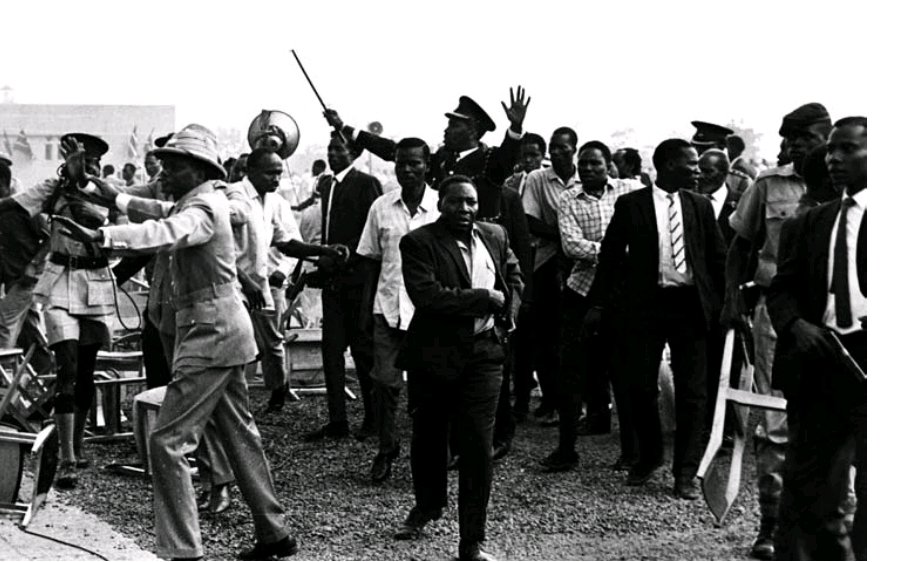For 54 years, it has been just whispers. Whispers on what might have transpired in Kisumu on October 25, 1969.
The whispers have been dying off slowly, with the current generation having little to no information about the event which reshaped the politics of Kisumu.
It was christened the ‘Kisumu Massacre’ masterminded by state security at a presidential function.
Even though official government records showed that 11 people were killed, other sources put the number at about 100.
According to available literature, Founding President Mzee Jomo Kenyatta had visited Kisumu to inaugurate Russia Hospital (the now Jaramogi Oginga Odinga Teaching and Referral Hospital).
However, during this period, Mzee Kenyatta and the then Nyanza political kingpin and founding Vice President Jaramogi Oginga Odinga were not drinking from the same pot politically.

Police shot people indiscriminately
During the event at Russia Hospital grounds, the two leaders were reported to have engaged in a heated verbal exchange.
This escalated tension which saw the crowd join in and begin to heckle the President, and protesting to disrupt his speech.
Presidential Security and the police moved in to disperse the crowd and evacuate the President by opening fire on the innocent public as the President’s convoy snaked out of Russia Hospital through to Nairobi road towards Kericho.
The event saw President Kenyatta ban Oginga’s Kenya People’s Union (KPU) Party, setting stage for One-Party State.
And for the first time, residents of Kisumu will be commemorating the day, in what organizers call reconstructing the fast fading history of the vital events which have defined the politics of the region.
When you go to the libraries, you will discover that documentation of vital and monumental moments which define the cultural, political and economic history of Nyanza is missing
Oloo Janak
Elders, youths, women, professionals and the general public will on October 27, 2023 convene in Kisumu to commemorate the day.
According to Oloo Janak, one of the convenors of the forum, the move is aimed at reconstructing the history of Kisumu and Nyanza region.
“When you go to the libraries, you will discover that documentation of vital and monumental moments which define the cultural, political and economic history of Nyanza is missing,” said Janak.
Despite the commemoration targeting to revisit the critical pre ad post independent moments, the organizers settled on anchoring the event on the 1969 Kisumu Massacre.
“We have Wagala Massacre commemorated every year by residents of North Eastern. Rwanda commemorates the 1994 Genocide annually, and this is the case with many communities and countries which want to preserve history for the future. We must move away from the culture of oral literature,” he said.
First-hand experience
The commemoration will involve narration from first-hand experience by those who were present at the venue of the Kisumu Massacre.
There will also a panel discussion and plenary sessions focusing on all the cultural, political and economic turning points that have shaped Kisumu and the Nyanza region.
According to Janak, despite Nyanza having a rich history, very little has been documented, leaving room for slanted narratives about the region.
We want to put names to events. Every vital occurrence must have a people and a story behind it. It is therefore important to document these events, and we start with this commemoration
Oloo Janak
The history of the heroes from the region, he said, have not been well documented, as well as putting to perspective the cultural, economic and political events which have defined the region.
“We want to put names to events. Every vital occurrence must have a people and a story behind it. It is therefore important to document these events, and we start with this commemoration,” he said.
